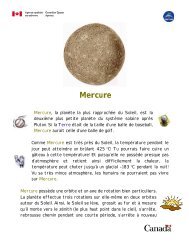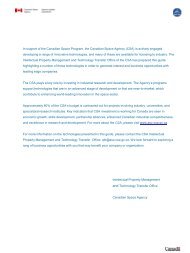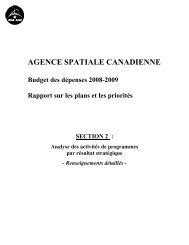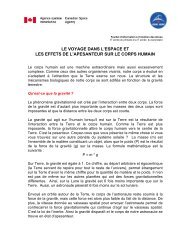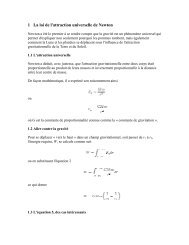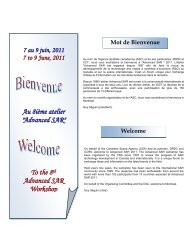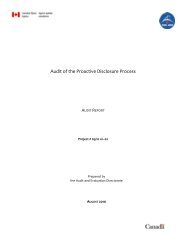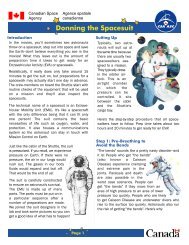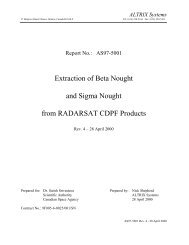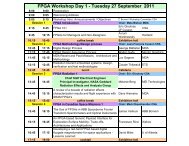PDF version of COSPAR - Space Science Research in Canada Report
PDF version of COSPAR - Space Science Research in Canada Report
PDF version of COSPAR - Space Science Research in Canada Report
Create successful ePaper yourself
Turn your PDF publications into a flip-book with our unique Google optimized e-Paper software.
also low-ma<strong>in</strong>tenance; they live <strong>in</strong> small bags and feed on a special chemical dietthat is automatically changed by a mach<strong>in</strong>e every six weeks. The chemical diet,developed by Nate Szewczyk <strong>of</strong> the University <strong>of</strong> Pittsburg, is a key componentthat allows the worms to reproduce <strong>in</strong> space.“These very small animals are easily cultured <strong>in</strong> space with equipment that canbe completely automated so we don’t have to devote a lot <strong>of</strong> crew time to culturethem,” said Cohen.Another important element <strong>of</strong> the experiment is the use <strong>of</strong> a particular stra<strong>in</strong> <strong>of</strong> C.elegans, appropriately named eT1. Developed by research associates RajaRosenbluth and Bob Johnsen from Simon Fraser University <strong>in</strong> British Columbia,its most significant feature is that it allows the researchers to capture andpreserve genetic mutations through many generations.Normally, genetic damage tends to elim<strong>in</strong>ate itself over time, Bailie said.“Damaged DNA leads to damaged genes, which leads to damaged animals, anddamaged animals die.”However, geneticists have used a “genetic trick,” a process called balanc<strong>in</strong>g, thatenables them to preserve a multigenerational record <strong>of</strong> genetic mutations <strong>in</strong> C.elegans. “It allows you to keep the damaged DNA copy over a copy <strong>of</strong> good DNAand allows you to keep the animals alive so you can analyze then,” Baillie said.“We can keep the damaged DNA so we know where it is. We’ll return the animalsalive to earth and determ<strong>in</strong>e what mutations they picked up when they were <strong>in</strong>space.”The DNA <strong>of</strong> the space worms will be compared to bits <strong>of</strong> DNA from normalworms conta<strong>in</strong>ed on a newly developed device called a DNA-array chip. Bailliesaid this “bleed<strong>in</strong>g-edge” technology allows them to quickly identify mutations,reduc<strong>in</strong>g the “people-time” it takes to analyze the DNA from months to hours.Baillie’s team has already demonstrated that they can <strong>in</strong>deed capture what hecalls “space mutants,” us<strong>in</strong>g samples <strong>of</strong> the eT1 stra<strong>in</strong> that were flown onmissions <strong>in</strong> 1992, 1996 and 2004. “Our stra<strong>in</strong> works as we designed it to work forcaptur<strong>in</strong>g mutations,” he said.However, these animals were only briefly exposed to space radiation (the longestflight was 11 days), so there were only a few mutations, not much more thanwhat occurs spontaneously on Earth. Baillie needed to park the worms on the<strong>Space</strong> Station for months at a time to ga<strong>in</strong> a better understand<strong>in</strong>g <strong>of</strong> the potentialradiation threat posed by long-duration flights.37



